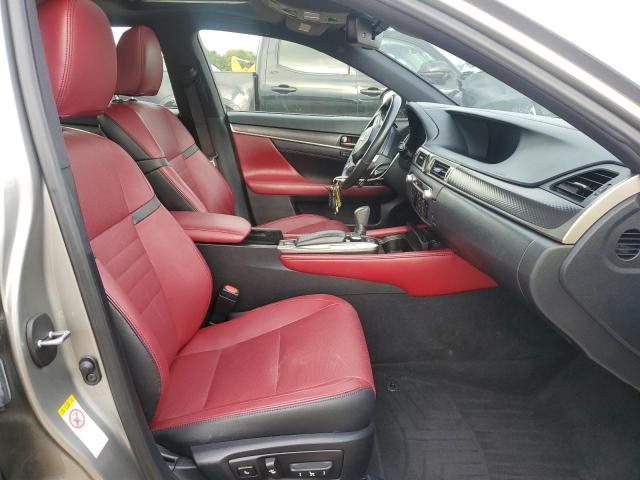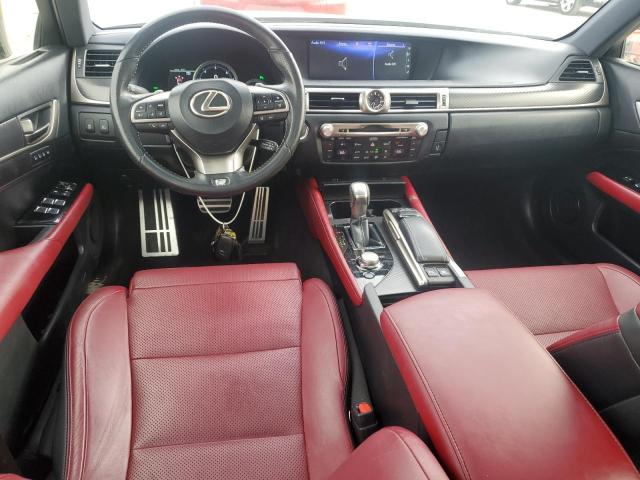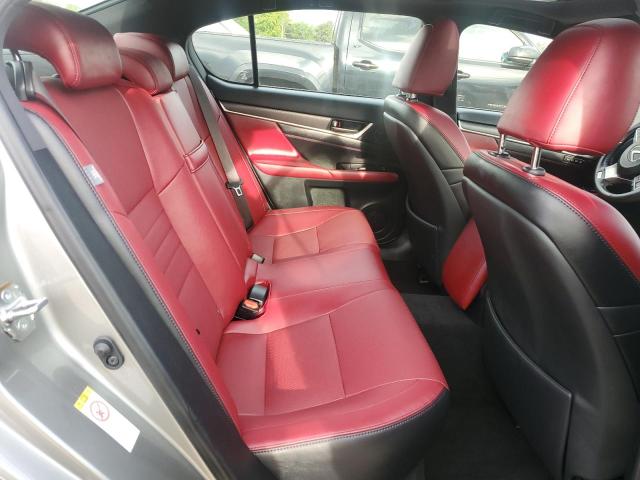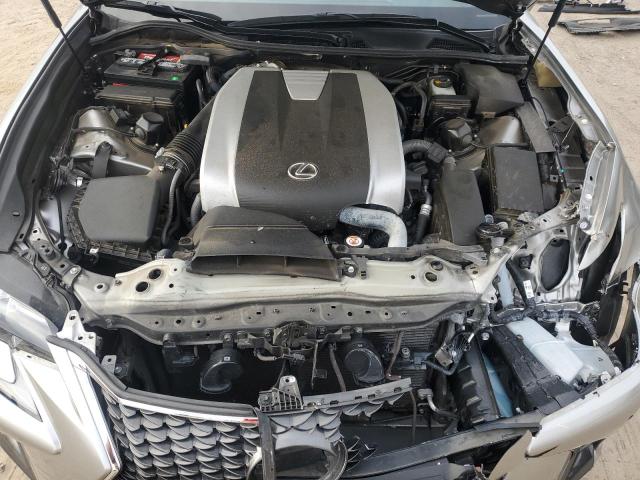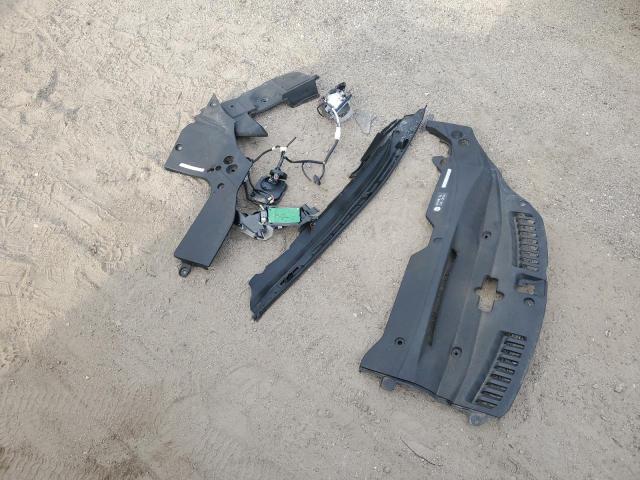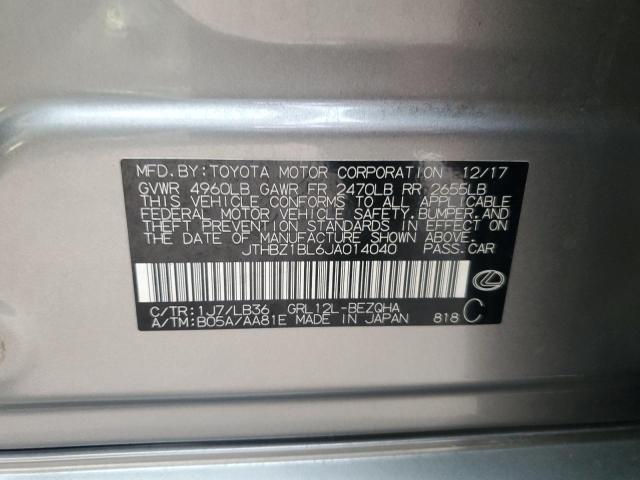2018 LEXUS GS | JTHBZ1BL6JA014040
 ❯
❯Lot details
- Sale Date2025-05-22
- Lot Number55699455
- ACV29829 $
- LocationAL - DOTHAN
- Odometer56,751 miles (91,332 km)
- Primary DamageFRONT END
- Secondary DamageSIDE
Vehicle specifications
4
~$87,000
Engine: 5.0L naturally aspirated V8
Torque: 530 Nm
0–100 km/h: ~4.6 s
While most variants of the Lexus GS prioritized refined ride quality and luxury, the range-topping GS F transformed the model into a genuine high-performance sedan. Powered by a naturally aspirated 5.0L V8 producing 467 hp and 530 Nm, the GS F delivered a 0–100 km/h sprint in 4.6 seconds, competing directly with German muscle sedans like the BMW M5 and Mercedes-AMG E-Class.
The GS F featured rear-wheel drive, an 8-speed Sport Direct Shift automatic transmission, and a Torque Vectoring Differential (TVD) with selectable modes for cornering agility. Lexus engineered the car’s chassis with stiffer bracing, adaptive variable suspension, and 14.9-inch six-piston Brembo front brakes, resulting in confident braking and excellent high-speed composure.
Other performance variants like the GS 350 F Sport and GS 450h F Sport offered a sportier driving experience with dynamic damping and performance styling, but it was the GS F that brought naturally aspirated theater, a screaming redline over 7,000 rpm, and track-ready credentials — a bold outlier in an era of downsizing and turbocharging.
Final Bid Lexus GS (2018)
$10,000
$12,448
$16,500
Body Styles
The Lexus GS (L10) was offered exclusively as a four-door, rear-wheel-drive executive sedan with mid-size dimensions and a balanced stance. It featured a cab-rearward silhouette, sharp character lines, and a bold interpretation of Lexus’s spindle grille, flanked by aggressively shaped LED headlights and L-shaped daytime running lights.
F Sport and GS F models added larger air intakes, black mesh grilles, rear diffusers, quad exhaust outlets, and trunk lip spoilers, enhancing their muscular aesthetic. The body measured around 4.88 meters in length, with a relatively wide track and short front overhangs, projecting a planted, purposeful presence.
Despite its sporting ambitions, the GS retained classic executive proportions, with a refined, aerodynamic shape and a well-integrated rear greenhouse. The GS F stood out with flared fenders, functional cooling ducts, and carbon fiber interior accents, making it the most aggressive GS ever built.
Model Name Meaning (Manufacturer)
“GS” stands for Grand Sedan, reflecting the model’s position as a luxury mid-size four-door in the Lexus lineup, bridging the gap between the IS and LS. It combines the comfort of a cruiser with the dynamics of a sport sedan — a philosophy that Lexus refined across multiple generations.
Body & Interior Colors and Rims
The Lexus GS (2012–2020) was offered in a refined and well-balanced palette of exterior colors, combining traditional luxury tones with bold sport-oriented finishes — particularly on F Sport and GS F trims. Standard colors included Nebula Gray Pearl, Obsidian, Caviar, Atomic Silver, Liquid Platinum, and Eminent White Pearl. More dynamic hues such as Ultrasonic Blue Mica 2.0, Matador Red Mica, and Nightfall Mica were reserved for sportier trims or made available through upgraded packages. The high-performance GS F introduced exclusive shades like Molten Pearl, Smoky Granite Mica, and Flare Yellow, visually distinguishing it from the rest of the GS lineup.
Interior color schemes varied by trim and market, but the GS featured a high-quality cabin finished in NuLuxe synthetic leather or semi-aniline leather on higher trims. Standard interior colors included Black, Parchment, and Light Gray, while F Sport and GS F models added Cabernet Red, Flaxen, and Rioja Red, often with black headliners, aluminum trim, or carbon fiber accents. The GS F further emphasized performance through contrast stitching, embossed “F” logos, thicker bolstered sport seats, and optional blue leather upholstery with Alcantara inserts.
Trim elements across the GS lineup included open-pore wood (such as Matte Walnut, Bamboo, or Gray Sapele), Shimamoku layered wood, brushed aluminum, or carbon fiber inlays, depending on the chosen package or model tier. Ambient lighting, analog clock placement, and Lexus’s signature Remote Touch Interface contributed to a cabin that balanced driver focus with premium comfort.
Wheel designs varied across the GS range. Base models typically featured 17-inch 9-spoke alloys in silver or machined finishes, while F Sport trims came with 19-inch split 5-spoke or mesh-style wheels in Dark Graphite or Gloss Black. The GS F was fitted with forged 19-inch 10-spoke alloys, inspired by racing wheels and available in polished, matte black, or graphite finishes. These wheels were wrapped in Michelin Pilot Super Sport or Bridgestone Potenza high-performance tires, sized staggered front-to-rear.
Braking systems included ventilated discs with silver calipers on standard models, while the GS F offered massive orange-painted Brembo calipers, signifying its elevated performance credentials. All models featured a low, planted stance enhanced visually by the wheels’ fitment within subtly flared arches — a restrained yet powerful aesthetic in line with Lexus’s “Aggressive Elegance” design philosophy.
Top Expensive Options
- Mark Levinson 17-Speaker Premium Surround Sound System: $1,380
- Adaptive Variable Suspension (standard on F Sport and GS F): ~$1,500 value
- Torque Vectoring Differential with Slalom and Track Modes (GS F): $2,200
- Lexus Safety System+ with Pre-Collision, Radar Cruise, Lane Keep: $1,500
- Navigation with 12.3" Display and Remote Touch Interface: $1,735
- Semi-Aniline Leather Package with Ventilated Seats: $1,200
- Carbon Fiber Interior Trim (GS F only): $1,000
- Heated Rear Seats with Power Sunshade: $760
- Color Head-Up Display: $900
- Orange Brembo Brake Calipers (GS F): $300
vs Competitors
The Lexus GS lineup challenged models like the BMW 5 Series, Mercedes-Benz E-Class, Audi A6, and Infiniti Q70. While German rivals often led in tech and badge prestige, the GS offered superior long-term reliability, quiet ride quality, and excellent value — especially in hybrid trims like the GS 450h, which combined V6 performance with fuel efficiency.
The GS F, in particular, rivaled the BMW M5, Jaguar XF SVR, and Maserati Ghibli Trofeo, delivering naturally aspirated performance in an era increasingly dominated by forced induction. Its biggest strengths were authenticity, usability, and engineering purity, wrapped in Lexus’s reputation for quality.
Fun Fact
The GS F was one of the last naturally aspirated V8 luxury sport sedans, with its 2UR-GSE 5.0L engine also powering the Lexus RC F and LC 500. Despite being lower in output than some rivals, the GS F’s throttle response, soundtrack, and linear power delivery earned it cult status among enthusiasts. Lexus ended GS production in 2020, making the GS F a rare, one-generation high-performance flagship — and the last of its kind in Lexus’s sedan lineup.








